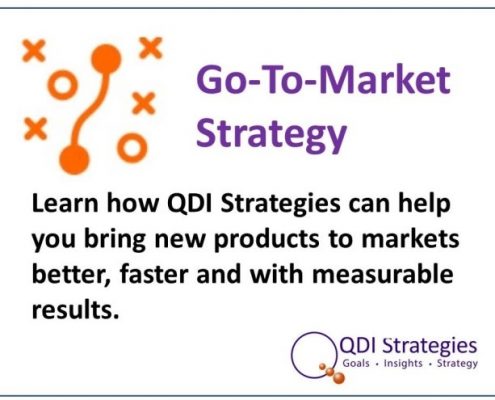Go-to-Market Strategy in the Covid-19 Environment
We’ve made it through nine months of learning driven by the restrictions caused by the Covid-19 pandemic. How have these affected your Go-to-Market planning and strategies?
- Channel Coverage
- Channel Competency
- Channel Connection
- Channel Commitment
Covid-19 has not changed what manufacturers and marketers need to be thinking about. It has changed how you might interact with your employees, customers and supply chain.
Before the pandemic manufacturers and marketers were responding to the consumer’s move to start their shopping process on-line. But consider what has happened to the channels for automotive manufacturers:
- The virtual sales channel concept has blossomed into a viable channel with Carvana, TrueCar, AutoTrader, and Cars.com
- Many customers (and dealers) stopped using the 30 minute test drive to confirm the buyers top 3-5 choices
- The 1-3 test drive to close the deal has emerged
- Carmax and Carvan are now offering new car return policies
Most of these changes aren’t going away after the pandemic. As you expect, car manufacturers are now:
- Researching the new customer journey map to understand the new landscape
- Creating and revising their educational changes to meet the customers new expectations
- Determining how to change their channel support to enable their dealers to meet the customer’s new expectations
- Exploring/testing new concepts to create competitive advantages for their brand
We will see share gains by the Car manufacturers who create the best new go-to-market strategies in the Covid-19 and post Covid-19 environments.
Creating or entering a brand new market poses a more complex, high stakes set of challenges. This has always been true. During and after the Covid-19 pandemic there are new challenges to be met.
In the Covid-19 environment, your channel management team needs to be able to assess a channel’s ability on four key dimensions which support successful channel strategies.
Channel Coverage, which measures the channels presence and importance to the target segments.
- Does your channel strategy give you access to each customer segment? To achieve success, you must be present at the point of sale. Do you have the ability to reach your target audience at each purchasing crossroad and at the key buying time? Are your channels calling on the right customers?
- To find this out, talk to your target customers and find out whom they buy this type of product from today or similar or related products. Then talk to the channel members they deal with – distributors, dealers or reps they deal with today to see how important this product category is, or could be in their business.
This ultimately is a geographic issue and potentially a market segment issue if you have products that cover multiple market segments. It is unusual that a channel will chase a new customer segment to sell your product. This only happens when the channel sees significant upside to its overall business or revenue by doing this.
Channel Competency, which measures the channel’s ability to deliver market share for your products.
- Do the channels you are evaluating have the skills and capabilities to communicate and deliver your value proposition? Value represents the benefits the customer perceives versus the total cost the customer incurs. These costs include all adoption costs, risk, and the purchase price the customer pays. You “win” more when customers perceive your offer as a greater value than the alternatives. Thus, your channel strategy must meet the needs and expectations of your customers if you expect to be successful. For example, do your customers want knowledgeable sales help or is this a product they would prefer to buy with minimal sales interactions?
- What capabilities or skills does the channel have that makes you believe it can deliver the presale, transaction, and post-sales value you need? What tools will you use to ensure the channel will allocated those resources to your products?
Channel Connection, which measures the channel’s ability to create and manage meaningful relationships with its customers. This is one area where we see many existing dealers and distributors maintaining existing relationships. However, with COVID they have not developed new ways of establishing relationships with new potential customers. As the pandemic passes will your channels regain this ability or have the customer’s expectations changed? Do you need to help your channels evolve to build customer relationships in the new environment?
- Your channel marketing strategy must provide the customer relationships necessary to become a valued customer partner. The channels should introduce you to customers’ senior management, planning, and R&D to expand knowledge of your customers’ needs. The affiliation between your channel and customer should allow you to conduct development and product testing programs with key customers. Above all, your channel partner should not be “just another vendor.” Your goal is to develop structural and social bonds with your target customers. What role is your channel strategy playing to make this happen? Is it a help, a hindrance, or not a factor at all?
- As you consider possible channel partners, ask to see their customer list and ask about key relationships that you want access to in order to determine if they have these relationships, or instead only have limited relationships, such as possibly only purchasing, with their customers.
Channel Commitment is a measure of the channels’ willingness to work with you to support your products.
- You can’t overestimate the importance of your relationship with your channel partners. Your success depends on their success. If your channels are congested with conflicting product lines, you’re not receiving the level of commitment you need to win the sale.
- Determine what you can offer the channel partner to increase his commitment. The clearer the economic and business model the channel can see – what he has to do and how he makes money, the better chance you have of getting commitment.
- Keeping commitment requires that you deliver on your side of the “deal” and the channel on his “side of the deal.” Doing so requires regular communications at a level of detail to understand what is working and not working, and how to change for success.
Want to learn more?
See QDI white papers on go-to-market strategies –
http://www.qdistrategies.com/resources/whitepapers/go-to-market/

Since 1991 QDI Strategies has delivered value across a broad range of companies.
Our clients range from start-up ventures to major global corporations. Clients come to us when they want to grow significantly faster than they have in the last few years. The scope of our engagements can range from a business unit up to the whole company or down to a single product line.
In some cases it’s a new technology, a new product, or entering a new market, where clients go from concept or initial sales to a successful business. In other cases it is a mature business that needs to change where their products are used, how their products are used, or completely reinvent themselves.
Visit us at http://www.qdistrategies.com to learn more of our consulting practices and to borrow ideas from white papers posted on our site.
Contact Steve Bassill or Mike Barr at 847-566-2020
Please post your comments and thoughts.


Leave a Reply
Want to join the discussion?Feel free to contribute!